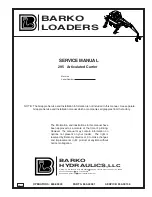
Matters to Be Observed When Using This Product / Reference Information
■
Soldering the resistor with too much solder or too little solder results in the poor reliability of the solder connection of the
resistor. Use the proper volume of solder in the soldering process. Sufficiently check for the volume of solder used.
■
Soldering with high bond strength or special property solder may affect the quality of the resistor. Do not use such solder.
■
Use rosin-based solder flux. When using highly active solder flux made mainly of halogen (chlorine, bromine, etc.), flux
residues may affect the performance and reliability of the resistor. Check the effects of flux residues before using the solder
flux. Do not use highly acidic flux, water-soluble flux, or flux containing fluoride ions. When solder flux sticks to the resistor
after the soldering process, the activation energy of the flux may corrode the resistor and cause it to fail. Prevent solder flux
from sticking to the resistor.
Keeping the product in the following environments or conditions may lead to degradation of its performance, solderability, etc.
Do not keep the product in the following environments.
(1) Stored in a place where the product is heavily exposed to sea breeze or a corrosive gas, such as Cl
2
, H
2
S, NH
3
, SO
2
,
or NO
X
.
(2) Stored in a place where the product is exposed to direct sunlight.
(3) Stored in a place where a temperature condition of 5
℃
to 35
℃
and a relative humidity condition of 45% to 85% cannot
be maintained.
(4) Kept in storage for more than one year from the delivery date (when the product is kept in conditions excluding any of
the environments (1) to (3)).
Before using the resistor, refer to the technical report issued by JEITA, EIAJ RCR-2121B "Safety Application Guide for
Fixed Resistor for Use in Electronic Equipment" revised in February 2015.
30-Jun-23
Storage conditions
Reference information
Guidelines
Downloaded from
























